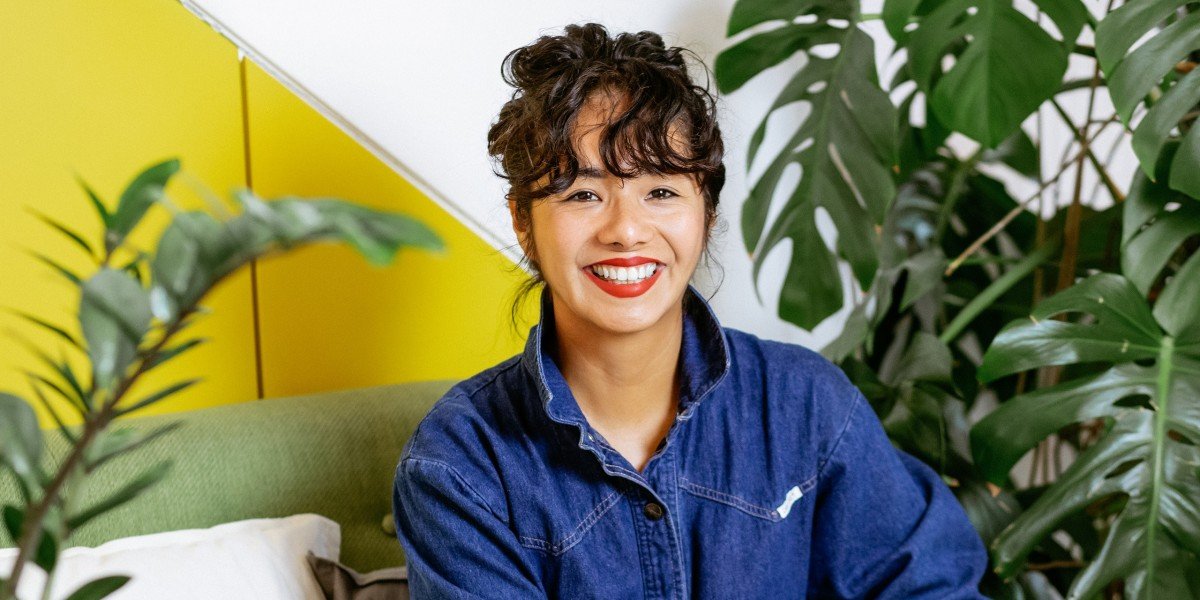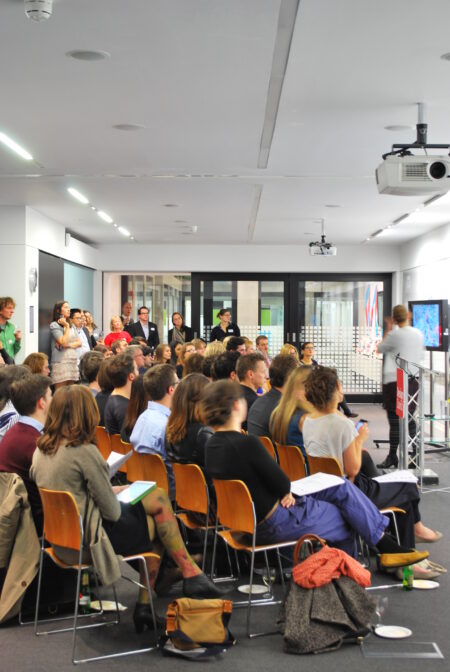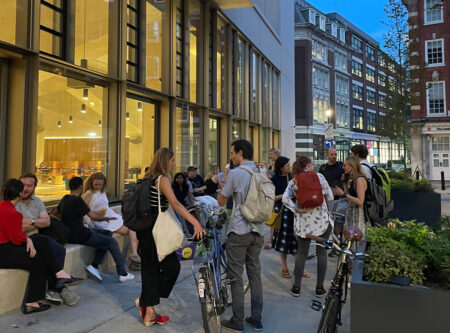Covid-19 has emphasised existing health inequalities across the globe. To solve this public crisis and reduce the rapidly increasing mental and physical disorders facing city residents, we need to create healthier and equitable urban environments.
Araceli Camargo is the co-founder of Centric Lab, a neuroscience research centre working to improve public health. The lab’s scientific team is led by Black, Indigenous, and People of Colour (BIPOC) neuroscientists striving to create better health outcomes for marginalised communities. Delano Bart-Stewart met with Araceli to discuss the legacy of Covid-19 and the relationship between poor health and poor urban planning
As a neuroscientist, how did you end up exploring urban issues and creating Centric Lab?
One of the classic pillars of neuroscience is to understand the human system in situ. Arguably our entire system is there to understand, react and adapt to its surroundings otherwise we don’t survive. Cities are a predominant habitat for people, so that’s why we have to look at the built environment.
Centric Lab was a happy accident. We had formed a coworking space for science, design, and technology and began hosting roundtables that looked at knowledge mobility – specifically how scientific knowledge has to move to be useful. If knowledge doesn’t move, we don’t move as a society. Advocacy, change, politics, all depend on the right knowledge.
It was at one of these events that I met Professor Xavier Golay, who at the time was Vice Dean for Enterprise, Faculty of Brain Sciences at UCL. I had been thinking about how to apply neuroscience outside of the lab. There is a lot of myth around neuroscience, but equally, there is a lot of use for it. I finally settled on the idea of a centre or a lab to help understand people in the places they inhabit. How do they perceive it, how are they affected by it, how do they navigate it – these were all the initial questions.
Months later, I scheduled a meeting with Professor Xavier who told me there was a Medical Research Centre grant coming and that I should apply to it with a neuroscience lead, Professor Hugo Spiers, whose specialism is navigation. His work has been instrumental in dementia and memory. Despite being the only non-pharmaceutical applicants, we got the grant. This afforded a secondment for Professors Spiers and that was that – we were off!
In September, Centric Lab announced its new direction would focus on biological inequality. Biological inequality meaning disproportionate and chronic exposure to environmental and psychosocial stressors. How did you arrive at this decision?
Our entire scientific team is BIPOC (Black, Indigenous and People of Colour), and we understand what science is capable of when you have a lot of bias towards one direction. We try as much as possible to not come in with a hypothesis. It’s always an observation, and we try to stay true to the process of observing without trying to put in a narrative.
Over the first three years, we were trying to understand the different components of cities, and we built the Stress Risk Score, which is a software that measures environmental stressors across all the streets of London. We thought we had found a biological explanation for why certain places feel ‘good’ and others don’t. The reasoning is that environments that feel good have low stress and vice versa.
However, we ended up discovering something more important. When we had all of London mapped out, we discovered that some areas had disproportionate levels of environmental stressors (air, noise, light, heat). Next, we asked what are the worst areas and what is happening there? Do they have poor housing? Are they more congested and heavily urbanised? For example, Euston Road scores very high; the area has little green/blue infrastructure, high levels of asphalt and concrete, high vehicle congestion, it’s by a red route, and it’s dense and has a lot of construction.
The next question was ‘who lives in these high scoring areas?’ and we realised that it is predominantly people of colour, specifically Black and Asian people, living in these habitats. So as a lab, we recognised that if people are constantly being forced to live in these types of environments, then their stress response is constantly being asked to adapt. That level of inequality is taking place at a biological level.
That’s why we came up with biological inequality, which we’ve now graduated to ‘biological inequity’ because inequity is more inclusive of a driven phenomenon rather than just a differential of values. Biological inequity also includes psychosocial stressors that come from the lived experience. So you have the stressors, but you also have the deprivation and lived experience of being forced to live in these environments. An example would be the awareness that you’re living in inequality, the constant worry of housing, financial and food security. It is very expensive to be poor, you’re constantly trying to survive and that causes another set of arousal responses in your body.
Centric Lab’s Health Justice Manifesto argues that ‘an individual can only have agency over their health only when their environment provides the right affordances’. Why is it so important that we frame health in terms of a system rather than judge individuals?
So that we can apply frameworks and solutions that are anti-racist and anti-classist. There seem to be new billboards around London that show a black woman holding a salad, highlighting that making healthier choices can tackle obesity because obesity has been identified as a comorbidity to Covid-19.
How are we going to get health equity for her when the government are putting out the narrative that black women are responsible for whether they live or die of an incredibly complex disease like obesity? Obesity is a dysregulation of metabolic, endocrine, and immune functions – it is not the ‘simple’ disease that is being portrayed. It warrants deep investigation and systemic solution, not just the condescendence of a salad bowl.
Let’s extend the narrative of the poster, that this Black woman represents essential workers; many of the frontline workers, specifically nurses and cleaners, are Black women. Before Covid, they would have experienced changes to the biological systems due to all the parameters of shift work: eating late, sleeping dysregulation, poor access to nourishing food, fatigue, little time for rest, zero-hour contracts, long commutes, stressful work environments.
If this person is sustaining a family, she may find herself with housing, food, and financial insecurity due to the nature of zero-hour contracts. If she lives in an area of high environmental stressors, commutes on London Underground, which has the highest level of air pollution of all in London, her body never gets rest from stressors. This complex web of biological stress is what wears and tears her biological systems, putting her at risk for obesity and diabetes. So then to reduce such complex, ecological phenomena as a single factor problem is gaslighting, racist, and scientifically inaccurate.
That’s why the Health Justice Manifesto was written. That is why we have to have an ecological and equitable approach to health because otherwise, we are going to continue to gaslight entire communities and blame them for their health when it is the habitats they’re living in.
Recognising all these variables, what do you think is the role of intersectionality in an anti-racist rehabilitation response to Covid-19?
From our point of view, the core role is that it forces you to look at communities. So even though we have to look at things at BAME level because that’s where the data sets are, in our research on ‘Covid-19 as trauma’ we were specific that part of an anti-racist strategy is to look at communities.
I am of Indigenous descent from Turtle Island (usually known as colonised North America), and my family has had to live in environments of biological inequity, which has led to the health problems that our lab is uncovering. Therefore, this is personal. Secondly, what my family has gone through is due to specific drivers ranging from colonialism to structural racism.
To understand how to support Indigenous communities with my family’s background, we have to treat them as a people, as a community, and not just a generalised data set. Otherwise, we ignore nuance. There are also Indigenous ‘Americans’ who will have specific health needs due to living in camps on the Mexican-American border that are different from those living on a reservation. It is essential to have this nuance as it looks at community, experiences and the habitats where they live.
You mention the ‘Covid as trauma’ study. With all the focus on ‘the new normal’, there has been less attention on the mental health toll and psychological legacy of the pandemic. Centric Lab has been exploring whether Covid-19 qualifies as a traumatic event. How should this distinction influence Covid-19 recovery efforts?
It’s important because it is going to produce another opportunity for inequity and for communities to be gaslit. Just how the rates of Covid-19 have not been equal, nor will the recovery. That is if we, as a society, don’t acknowledge the trauma and the mental health side of it.
The disproportionate Covid-19 death rates for people of colour means that members of Black, Asian and Indigenous communities are seeing multiple relatives wiped out at once. What are we going to do to help these communities rehabilitate from that trauma? Because if we don’t, they’re going to end up in the quadrant of post-traumatic stress disorder or depression or anxiety which will also lead to physical diseases.
Twenty years down the line, we’re going to see Black or Indigenous or Asian communities disproportionately getting PTSD, disproportionately having even more cases of diabetes, obesity, Parkinson’s and dementia. Right now, we must tell the story correctly, which is that BIPOC communities have been disproportionately hit by this pandemic, not just in contagion but the secondary consequences which lead to trauma.
The secondary consequences being losing loved ones and not being able to mourn, losing elders, facing even more financial, housing, and food insecurity, experiencing the frontlines of this disease, or feeling constantly anxious for a parent who is on the frontlines, and so on. Biologically trauma can lead to PTSD, depression, anxiety and with time can contribute to obesity, cardiovascular diseases and diabetes. The dysregulation of the system can also contribute to certain cancers and dementia.
As this country has a long history with classism, we should also address that poor white communities will face very similar circumstances. I have a deep concern for those in Wales for example, who faced three weeks of back-to-back floods at the beginning of the year and then faced the pandemic straight after. Many were made homeless due to the floods; particularly those living in social housing. There has been no coverage on if they were given Covid-appropriate temporary accommodation or if they have now been properly housed. My fear is that they faced Covid, financial hardship, and homelessness due to flooding simultaneously without adequate resources – in turn, facing health inequalities.
You’ve produced the Neuroscience for Cities playbook that illustrates how neuroscience can be used to unlock opportunities for better user experiences for city residents. What are some takeaways that you think could guide us as we reimagine cities post-pandemic?
It’s been three years since we wrote the playbook, but my main takeaway from that research is that we do not have time to solve the ‘fun problems’. We don’t have time to talk about ‘tech in the cloud’ and solve questions like ‘how can we get the bus to talk to your phone?’ when we have air pollution and people dying of respiratory diseases.
I watch planners, architects, policymakers, who are ready for a bike utopia. However, we have climate change to contend with, vast health, financial, and social inequities to address. We are not a point where we can think about utopia when there are people living in immediate danger. We’ve got to figure out so many more fundamental human problems before we can fixate on things that are, quite frankly, aesthetics.
I don’t know how to close that divide but, if I could make three suggestions, the first would be to get white, privileged people (which is the dominant demographic of those who put our cities together) to understand the gravity of their decisions. Their decisions affect real people and communities. The effect is not superficial – it’s biological – therefore, they need to take responsibility. Furthermore, we have incredible science and data that we can draw from to make our cities truly healthy, so it’s our moral imperative to apply this knowledge. People that build cities are in the public health sector, whether they acknowledge it or not.
The second would be to galvanise, inspire and support communities on the ground. At Centric Lab, we’re learning from communities and meeting them on the same level playing field. As a scientist, I cannot consider myself an expert of someone’s lived experience. I perhaps have different tools to measure that experience to translate it to biological terms. However, it is different – not better or more advanced. Therefore, platforming communities as intellects and scholars of city life is imperative to make more equitable environments.
The final point would be policy change and getting policy to mirror the biology as much as possible. At the moment policy, even if it’s ‘health policy’, really is about how much we can get away with rather than creating policy to heal people – and that’s what we’re going to need.
Araceli Camargo is lead scientist at Centric Lab and a cognitive neuroscientist focused on how people interact with urban environments. This interview has been edited and condensed.






